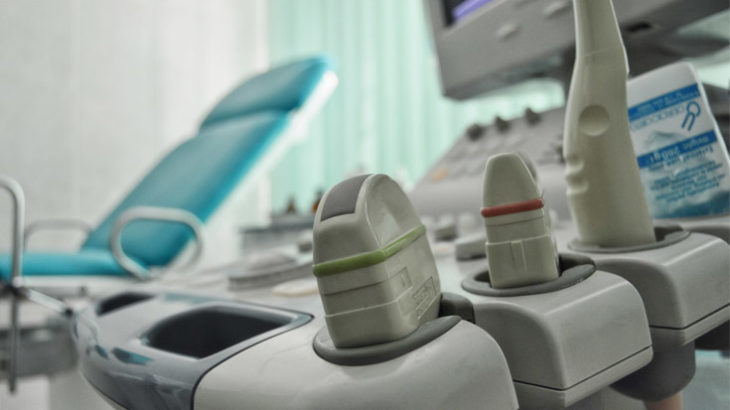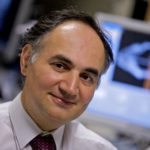How to Improve Your Image

From screening unborn babies to combating cancer, the need to make medical imaging ever more effective goes to the heart of the never-ending drive to pioneer new possibilities in healthcare. At King’s College London (KCL), the Division of Imaging Sciences and Biomedical Engineering, led by Professor Reza Razavi, is dedicated to the development and rapid application of imaging and computational modelling techniques capable of delivering advances in this field.
To this end, the Division relentlessly reaches out to fellow SES members and to industry, healthcare providers and academic institutions to forge powerful collaborations that create new capabilities – boosting clinical care and ultimately benefiting thousands of patients worldwide.
Putting Parents in the Picture
“Maximising opportunities to innovate and optimising patient outcomes means taking a proactive approach to collaboration”, Professor Razavi explains. “Research must never be a closed shop or a one-way street – it’s vital to look outwards and recognise that dialogue, interaction and teamwork are the lifeblood of the process.”This philosophy is reflected in the £10 million initiative iFIND (Intelligent Fetal Imaging and Diagnosis), funded by the Engineering and Physical Sciences Research Council (EPSRC) and the Wellcome Trust. With the lead taken by KCL and its clinical partners on the St Thomas’ Hospital campus where the Division is based, a consortium including Imperial College, Philips Healthcare, Toronto’s Hospital for Sick Children and Florence University is striving to achieve a step change in the ability of routine pregnancy screenings to pinpoint abnormalities in unborn babies.
To meet this ambitious aim, the iFIND team’s approach combines the use of:
- Multiple ultrasound probes to deliver a comprehensive picture of the entire baby.
- Magnetic Resonance Imaging (MRI) to supplement ultrasound and help generate detailed 3D images.
- Robotics to govern the ultrasound probes’ movement, and computerised imaging processing to enhance image quality.
With strengths ranging from computer science to engineering and clinical translation, the multidisciplinary iFIND team are working cohesively to deliver the project’s goals. A key dimension is delivered by Philips’ involvement in the shape of both Philips Research and the company’s ultrasound business unit; these are providing access to the latest technology and to cutting-edge developments from their labs, while offering a potential route to market once the technology is developed.
Professor Razavi comments: “Working together, we aim to substantially improve pick-up of congenital abnormalities during pregnancy and so improve outcomes for the children by allowing prompt treatment at a specialist centre, as well as appropriate counselling to their parents.”
Collaborating Against Cancer
Arguably no field has benefited more from the huge strides made by medical imaging than the battle against cancer. The enormous progress achieved in diagnosing and treating the disease simply wouldn’t have been possible without advances in imaging capabilities – and the drive to go on equipping the healthcare sector with increasingly sophisticated imaging techniques is a key part of its anti-cancer armoury.A joint venture between KCL and UCL, the Comprehensive Cancer Imaging Centre (CCIC) is in the thick of the battle. Set up in 2008 and supported by Cancer Research UK, EPSRC, the Medical Research Council and the Department of Health, the CCIC focuses on finding ways to pinpoint earlier which specific treatments will deliver the best results for individual patients. It realises this aim by:
- Developing new advanced imaging techniques that generate data for use in directing treatment, in assessing how a patient responds and in predicting treatment outcomes.
- Identifying new uses for existing techniques, including those enabling doctors to watch therapies at work by tracing radioactive markers injected into the patient.
“Research must never be a closed shop or a one-way street – it’s vital to look outwards”
Professor Reza Razavi, Head of Division of Imaging Sciences and Biomedical Engineering
The ability to draw on specialist expertise across different institutions is instrumental in doing this. Involving nine different departments across KCL and UCL, expertise in radiology, surgery, oncology, biology, chemistry, physics, engineering and maths dovetails to form a unique research resource that has already delivered a string of successes.“Securing practical outcomes is a vital aspect of our work at the CCIC,” says Professor Phil Blower, Chair in Imaging Chemistry at KCL. “For example, technology developed and patented at King’s to incorporate radionuclides into radiopharmaceuticals forms the basis of a new tracer for prostate cancer; offering high sensitivity and very easy production on a hospital site, this is undergoing early clinical trial with commercial investment. The same technology is incorporating radionuclides into cancer-targeting proteins developed at UCL to make other tracers for cancer which are also heading for clinical trials.”
Industrial Action
Talking to industry, listening to industry, working with industry: in a field where successful translation of research findings into tangible real-world outcomes can literally be a matter of life and death, engaging with businesses isn’t a luxury but a necessity.This close alignment with the needs and priorities of industry is reflected in the progress already being made by the joint KCL-Imperial Centre for Doctoral Training (CDT) in Medical Imaging. Established in 2014 and based at St Thomas’ campus, this EPSRC-funded CDT offers a comprehensive interdisciplinary PhD programme carefully designed to train the next generation of imaging scientists vital to the future health of both academic research and industrial organisations involved in this space.“Industrial involvement and an understanding of industry’s requirements are an absolutely fundamental foundation of our work here,” says Professor Julia Schnabel, the Centre’s Director. “The emphasis on industry-sponsored projects and cutting-edge yet commercially relevant research doesn’t just mean our students’ work is closer to having a genuine impact; it also helps illuminate their future career pathways.”This characteristic combination of a future focus with a keen awareness of current needs explains why the work of this CDT and of the Division as a whole is set to sustain its vital contribution to medical imaging, as capabilities continue to develop and new needs continue to emerge.
“An understanding of industry’s requirements is an absolutely fundamental foundation of our work”
Professor Julia Schnabel, Director of the CDT in Medical Imaging
Further Information
- Native T1 Mapping in Differentiation of Normal Myocardium from Diffuse Disease in Hypertrophic and Dilated Cardiomyopathy.
- Effects of Hypothermia for Perinatal Asphyxia on Childhood Outcomes.
- Are Pretreatment 18F-FDG PET Tumor Textural Features in Non-Small Cell Lung Cancer Associated with Response and Survival after Chemoradiotherapy?
KCL Division of Imaging Sciences and Biomedical Engineering
King’s Medical Imaging Youtube
Centre for Doctoral Training in Medical Imaging Featured image: “Sonography. Prepare for ultrasound examination. Ultrasound transducers” by Shidlovski
Image 1:
3D ultrasound image from the iFIND initiative.
Image 2:
Image of thyroid cancer captured by Positron Emission Tomography (PET) as part of a clinical study at the CCIC.
Image 3:
Imaging Sciences and Biomedical Engineering Division symposium.
Image 4:
Dual-probe ultrasound machine being tested as part of iFIND. Download full study (PDF)
Contact

Professor Reza Razavi
Head of Division of Imaging Sciences & Biomedical Engineering, King’s College London

